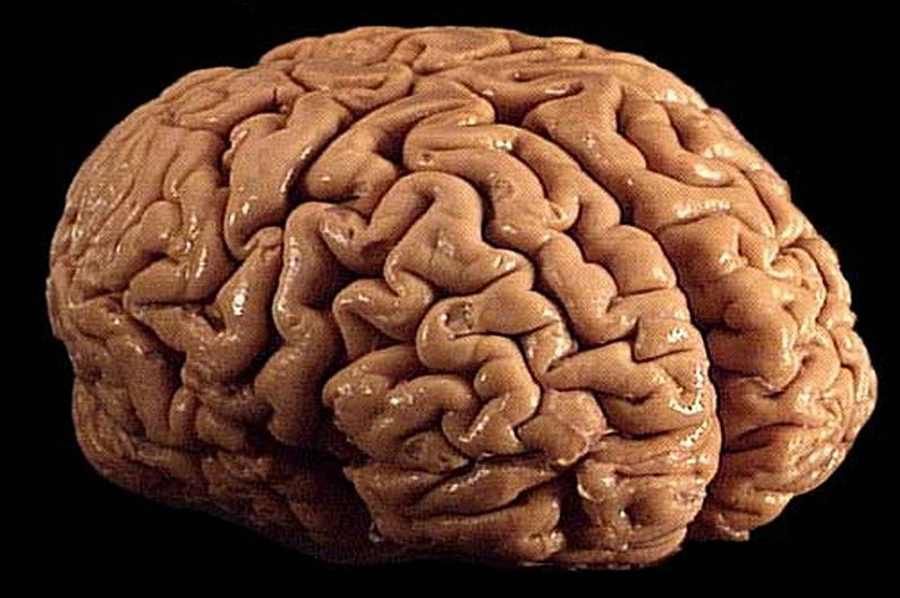Genes responsible for the evolution of the human brain have been identified
The genetic changes that are responsible for human brain development have been elusive until now. However, the researchers were able to identify a family of genes called NOTCH2NL that played a key role in the development of the human-specific cerebral cortex and could drive the evolution of our brains.
Evolution of mózgu over millions ofóin years has played an important role in our ability as a species to think, problem-solveów and developing culture. But the genetic changes behind this expansion, whichóra made us human, were poorly understood. Now scientists have shed some light on the issues.
In the pages of the journal „Cell” two studies by independent teams have been publishedóin the scientiów indicating a group of genesóin NOTCH2NL, whichóre may be responsible for the development ofój of human mózgu. These genes are only active in humans.
– Our mózgi have become three times the size of the headónly due to the expansion of certain areasóin functional cortex mózgowa and is the foundation of why we are human. There is no more exciting scientific question, które móhead I could think of, than to discover and decode the mysterious genetic changes thatóre have made us who we are – said Professor David Haussler of the University of California, Santa Cruz, wspóhe author of one of the publications.
Researchers led by him porównali expression of genesów during the development of mózg in humans and macaquesóIn models derived from comóstem cells. They realized that NOTCH2NLs are present and active only in human comórkach. They were not present in macaqueów. Additional studies have shown that they are not róAlso in the orangutanów, and in closely related humans gorillas and chimpanzeesóOnly their skrócone, inactive versions.
Reconstructing the evolutionary history of genóat NOTCH2NL revealed that for fixing a non-functional version of NOTCH2NL, która originally appeared as a partial duplication of an essential neurodevelopmental gene known as NOTCH2, a process called gene conversion is responsibleów. According to scientists, this happened 3-4 million years ago – about the same time as theórym according to the fossil study, human mózg began to increase its volume. Researchers believe the gene has duplicated two more times.
The authors of the second publication in the journal „Cell” Under the direction of Professor Pierre’a Vanderhaeghen from the Université Libre de Bruxelles were looking for the geneów active during fetal development mózgu. Searching for human genesóin responsible for the development ofój mózg proved difficult, as these genes are typically poorly described in genome databases and are difficult to unravelómend from the more common genesópresent in other speciesów.
– Discovering what during human development was responsible for the larger mózg, is the Holy Grail of researchers like us. Given the relatively rapid evolution of the human mózgu, it’s tempting to speculate that the human-specific genes just identified could helpóc shape our mózg in a species-specific wayób – admitted Vanderhaeghen.
Syndromeół Vanderhaeghen has developed a special RNA sequencing analysis tailored to detect specific genesóin the cortex of mózg fetal. This allowed them to identify 35 genesóin unique to humans, whichóre are active during the development of the cortex mózgowa, including the geneów NOTCH2NL.
Researchers focused on NOTCH2NL because of the importance of the primary NOTCH2 gene in signaling processes thatóre control whether cortical comóstem cells produce neurons or regenerate more cellularóstem cells. This led to the discovery that the artificial insertion of the NOTCH2NL gene into the embryoóin mice increased the number of cellsóstem recs in the developing cortex of the mózgowa.
To better understand the function of these genesów, compositeół zwrócated to model the development of the human cortex mózgowa from the comóstem rec. It turned out that NOTCH2NL can significantly expand the population of comóprogenitor reps, which in turn generates more neuronów.
– From one cellóThe parent cell can give rise to two comórki progenitor cells, two neurons or one comóprogenitor cell and one neuron. NOTCH2NL shifts the róThe balance towards the production of comóprogenitor recs, whichóre póThen they can produce more neuronów. This small effect early in development produces significant effects in póThe later time – explained Vanderhaeghen.
SyndromeóHaussler’s study looked at what happens when NOTCH2NL is not expressed in the. They removed the gene from human cellsóstem records and used them to grow lobesów bark móbent. Although they developed much faster, they were ultimately smaller in sizeów.
NOTCH2NL genes act through opóThe developmental enhancement of cortical comóstem recs into neurons, resulting in more neuronsów. The study found that they undergo significant expression in neural comóstem cells of the cortex mózg and are found in a part of the genome associated with neurodevelopmental disorders such as ADHD and autism.
